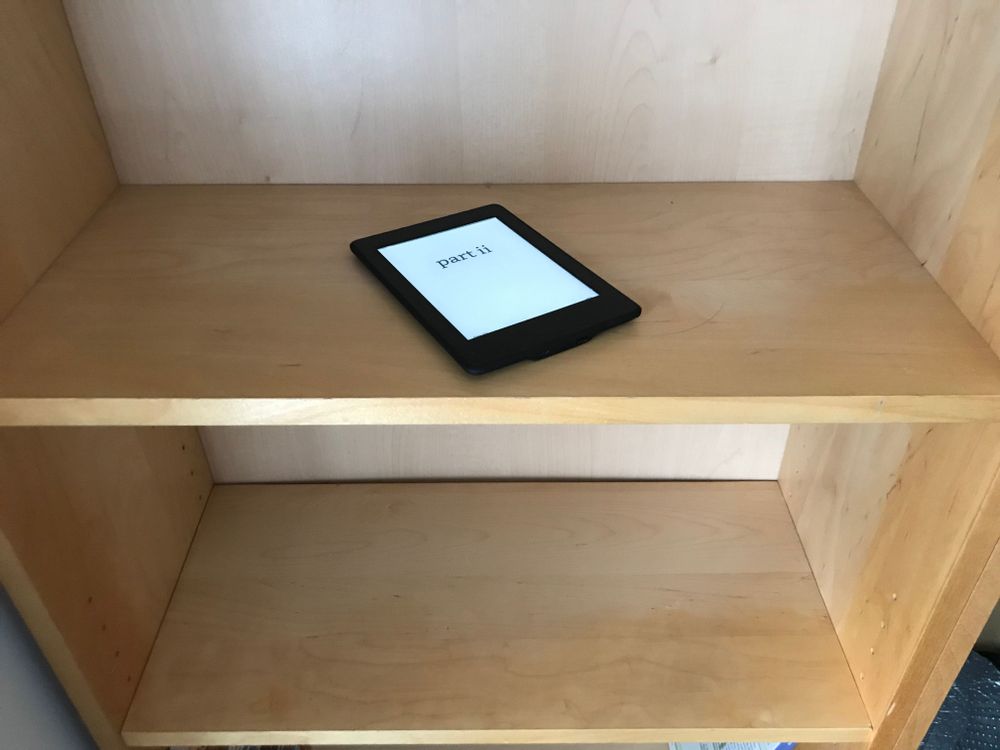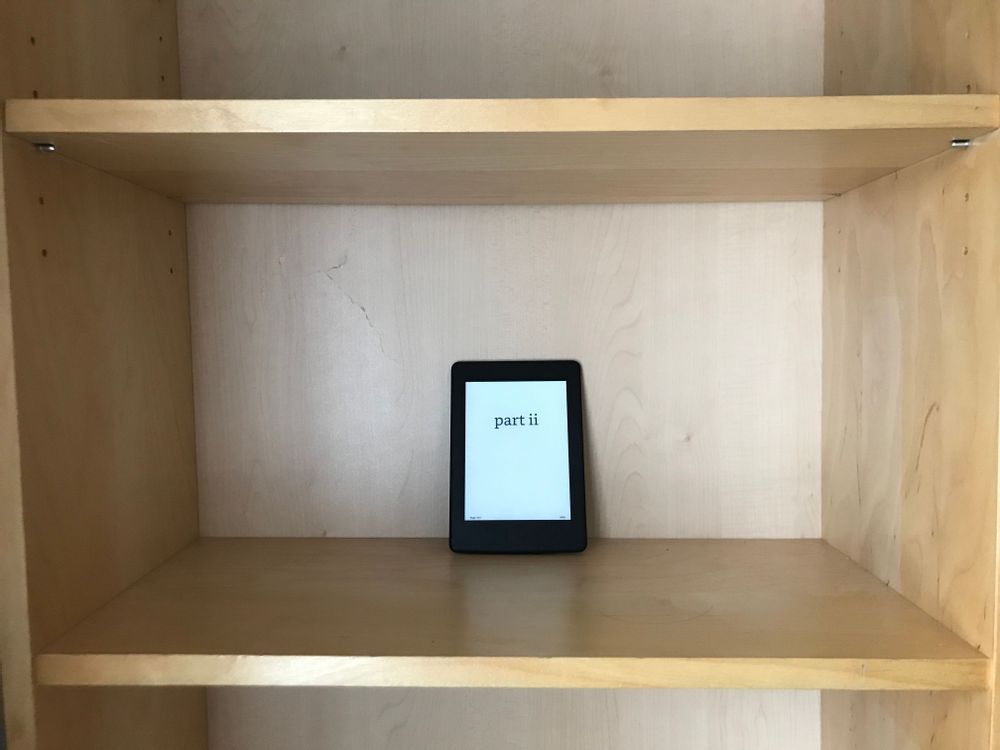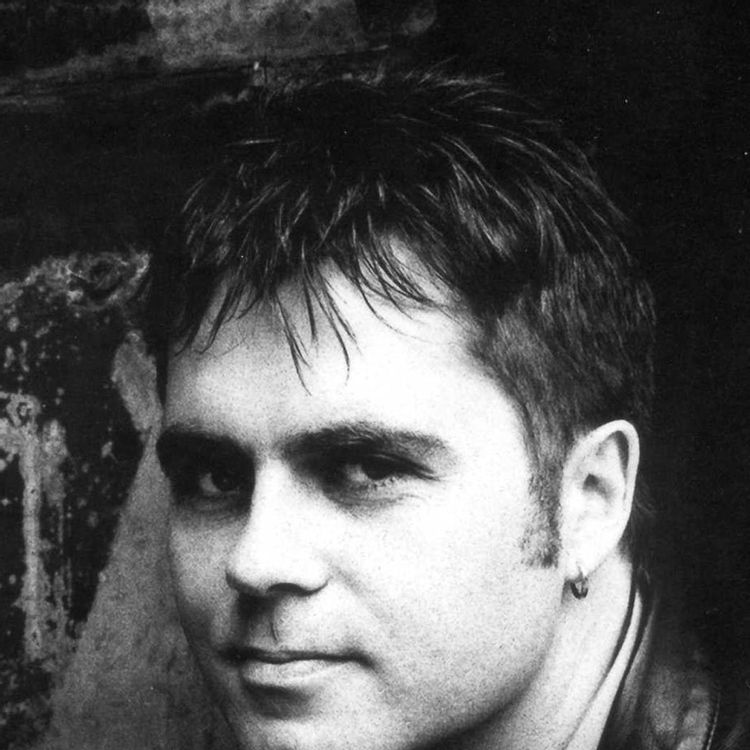When I was still in high school, I read this anecdote in the Introduction to Harlan Ellison’s Strange Wine:
As Isaac Asimov said recently in an article postulating the perfect entertainment cassette, “A cassette as ordinarily viewed makes sound and casts light. That is its purpose, of course, but must sound and light obtrude on others who are not involved or interested? The ideal cassette would be visible and audible only to the person using it . . . . We could imagine a cassette that is always in perfect adjustment; that starts automatically when you look at it; that stops automatically when you cease to look at it; that can play forward or backward, quickly or slowly, by skips or with repetitions, entirely at your pleasure . . . Surely, that’s the ultimate dream device – a cassette that may deal with any of an infinite number of subjects, fictional or non-fictional, that is self-contained, portable, non-energy-consuming, perfectly private and largely under the control of the will . . . . Must this remain only a dream? Can we expect to have such a cassette some day? . . . We not only have it now, we have had it for many centuries. The ideal I have described is the printed word, the book, the object you now hold – light, private, and manipulable at will.” [1]
Brilliant as this passage is, it was written in a world that was becoming computerized but was still mostly analog. What it misses is crucial: the ideal entertainment cassette wouldn’t have fixed contents. It would be quantized, algorithmically manipulable (so that you could do things like search it from a command line), and most importantly of all, it would be networked.
In 2019, my fiction shelf contains exactly one object: a Kindle Paperwhite.
When I moved from Winnipeg to Toronto in 1990 to begin my PhD, I brought 45 B-cartons of fiction with me. Most of it was science fiction and fantasy paperbacks, with a few hardcovers that I’d picked up here and there. All of it was in immaculate condition, except maybe for my copy of Dune, which had a few scratches in the foil-stamped lettering from being kicked across the playground in the third grade.
Almost all of those books are gone now.
Most of them I sold gradually over the next decade to Bakka (now Bakka-Phoenix), Toronto’s science fiction book store. On one hand, I needed the money, and on the other, many of my books were becoming yellow and brittle because they were made of cheap materials. The clerks at Bakka were always happy to have them, as many were classic titles that had never been reprinted, and I took excellent care of my books. Selling them there let me imagine that someone else might enjoy them at some point, as I walked out the door with that week’s food money in my pocket.
It’s not that I wasn’t buying books any more. But the books I was buying were different. And there was only so much shelf space.
Some of them were works of theory, philosophy and media history that would become the core of the professional working library that I still use today. I married another professor, and our combined working libraries fill an entire wall of our home office (4.5 x 2.5 metres). I buy paper copies of these books because I like to argue with them. They are full of annotations and underlinings, questions and comments pencilled in the margins. With a newer tablet and the proper stylus, I suppose I could achieve something like the same effect, and both the contents and my notes would be fully searchable to boot. But I have neither the money to buy digital copies of every book in my working library nor the time to annotate them all again. I have literally built a career out of residual media, and these books are part of my toolset.
Until about 15 years ago, I also bought a lot of small-press poetry. There’s almost as much of it in my office at the university now as there is nonfiction in the working library at home. Since I don’t write, read, publish or study poetry at the moment, and haven’t for years, it just sits there. If there were a Bakka for deliberately opaque books that people didn’t want, that’s where my poetry collection would be headed.
I started reading fiction again a few years after I finished my dissertation (Barbara Godard, one of my mentors, used to say, “You can read primary texts any time.”). But by the time I had the leisure to read outside my field, I was reading on small screens.
When I had a Palm Pilot, around 1997, I read a few novel-length books on it, purely out of curiosity about the experience. But after 2005, my first tenure-track job required my to spend somewhere around 5 hours per work day on the Greyhound. When I got my first iPhone, some time around 2007, it became my primary leisure-time reading device, first on the bus, then everywhere.
Having kids reinforced my small-screen fiction-reading habit. I read all of A Song of Ice and Fire off the tiny glowing screen while walking around the house between 1 and 4 AM with a squalling baby on one shoulder.
When the first iPads came along, I bought one, assuming it would replace my phone. But the form factor was too heavy to comfortably hold in one hand for long periods, and I grew tired of lugging it, my phone, and a full-size laptop everywhere I went. My kids use the iPad to watch what we used to call TV. I have never replaced it with a newer one and have no intention of doing so, because it does nothing for either my professional or leisure reading activities.
My Kindle is a fairly recent acquisition. More precisely, it’s a Kindle Paperwhite (2nd generation), released in late 2013. Early Kindles looked like they’d been designed in a Russian tractory factory, and I wanted no part of them for purely snobbish reasons. The Paperwhite 2 is still sort of homely, but it’s small, light, and cheap. Further, the combination of the matte-screen “E Ink” display and the LED edge lights mean that it’s more legible than an iPhone screen, and that it has a much, much longer charge cycle.
So the physical experience of reading off of a Kindle is fine for my purposes, in that it’s comparable to reading a cheap paperback. Ah, but what about the smell of books, Darren?, you say, waxing nostalgic. Fuck that, I am allergic to paper mites and paper mix. When I went to work in the Coach House, I needed a steroid inhaler for three months until my traumatized lungs adjusted to the toxic cloud that constantly surrounded me.
There are, however, a boatload of other compromises that come along with my decision to use this device. As a media historian with an interest in cultural policy, and as someone who was working in Canadian publishing during the early days of the emerging e-book economy, I know all about the downsides.
The Kindle is a consolation prize. In exchange for an irreplaceable loss of quality of life, constant algorithmic monitoring of my reading habits, and the certainty that I don’t really “own” anything I buy through it because I can’t sell it when I’m done with it (this is what legal scholars call “right of first sale”), I get instant access to an almost infinitely long digital bookshelf that gets longer by the minute. Some of the titles on it are free, but most have a price tag. As Jeremy Rifkin says in The Age of Access, as a culture, we have traded our rights for conveniences[2].
Going to bookstores of all shapes, sizes and descriptions used to be a huge part of my daily schedule. But the one-two punch of Chapters-Indigo and Amazon decimated most of the Canadian independents. We live in an oligopoly where virtually all book retail sales in Canada flow through these two entities (Benjamin Bratton refers to such companies as “The Stacks,” because of their near-total vertical control of entire market sectors[3]). So my browsing happens mostly online.
That browsing is closely monitored. There’s money to be made not only by selling me things, but by offering me things based on what I’ve bought, or even what I’ve browsed. And there’s money to be made by selling information to publishers about what I buy, and how much of those books I read, about where I stop in the book if I don’t finish, and what I underline. Because of that intense scrutiny, I probably have a larger audience as a reader than I ever did as a writer, even if a good chunk of that audience consists of robots.
(Incidentally, one of the most bullshit things about Amazon ebooks is that Amazon broke cut-and-paste, one of the most fundamental gestures of digital navigation. I can highlight things in a Kindle ebook, but then I have to navigate to a special section of the Amazon website to see what I have selected and make use of it. The imperative is clear: make people return to the Stack whenever possible, using all available means, including hampering functionality.)
When I’m done with my digital books, there’s no trip to the digital Bakka afterward. With ebooks, Amazon is not selling you anything; they are granting you “a limited, non-exclusive, non-transferable, non-sublicensable license to access and make personal and non-commercial use of the Amazon Services”[4]. Under some conditions, you can loan the book for two weeks to another Kindle user, and some public libraries are authorized to loan ebooks, but the publisher has to permit this for it to happen. If (when) Amazon goes under, or if (when) my heirs somehow delete my Amazon account when I die, all my digital book licenses disappear too.
Of course, collections of print books were never innocent either. And building a library of them has always had everything to do with the anxieties and ambitions that are part of belonging to the upwardly mobile middle class. There’s a reason that today’s leather-bound editions of “classic” books from companies like Franklin Books[5] are all different sizes, shapes and colours. Rich bibliophiles would have had all have their books bound in the same specific leathers, colours and styles. What the range of binding styles that Franklin and other companies use is imitating is the motley assortment that would result when the collections of the wealthy were broken up for resale for some reason (death, boredom, destitution). The emerging middle classes aped their betters by picking through their leavings, producing very different kinds of personal libraries as a result.
But even that is no longer an option. I remember looking with awe and envy at the home libraries of my Silent Generation and Baby Boomer professors. More than one of them constructed an addition to their house for their library (and in one case, because the books were shelved two deep, the addition required a specially reinforced foundation). At 52 years old, I finally have stable job that allowed me to buy a house, but it will never be organized around books, because that’s out of my financial reach.
What’s actually on my Kindle at any given time is not the totality of ebooks I have licensed; it’s just the ones I am reading at the moment, or have just finished. The rest reside on an Amazon server somewhere.
It’s not that I trust the rhetoric of cloud computing. On the contrary, I don’t believe that digital media preserves anything. At all. Digital media is space-biased; what it does is circulate (and that circulation is always at the behest of power and money). Ebooks come and go in flows. If I can’t find one fiction title I want, there’s always another. The algorithms make sure of that. If fiction were anything other than a distraction for me, I’d be much less lackadaisical about it.
I still buy paper fiction titles for my kids. The materiality of children’s fiction relies heavily on questions of format – trim size, paper stock, colours, special bindings and so on – and the Kindle deals with all of these issues poorly. Besides, they have enough screens in their lives already. I want them to learn the skills that come with long-form reading, and the best way to do that is to give them print books.
When I bothered to look, I wasn’t surprised to discover that the research on paper vs. screen reading supports the decisions that I have made over time. I’m a symptom, not a leader.
In broad terms, networked digital media has increased textual production and literacy, but long-form textual production is on the decline, and the short form reigns supreme. Digital leisure reading is fine. If you bother to learn how to do it, you can learn to work with digital texts in a critical way, but studies show that scholars still prefer to print out digital texts when they prepare to study them in any detail, if price isn’t a factor.[6]
Right now, we live in a world where we don’t have to choose between print and digital. Print will likely persist in residual form, both as the cheapest and most decadent alternatives to digital text. But I keep coming back to the favourite saying of Sheikh Rashid Bin Saeed Al Maktoum, the late ruler of Dubai: “My grandfather rode a camel, my father rode a camel, I drive a Mercedes, my son drives a Land Rover, his son will drive a Land Rover, but his son will ride a camel.”[7] When print once again becomes the dominant medium for reading, it probably won’t be because we prefer it.
Gallery


References
Ellison, Harlan. “Introduction: Revealed at Last! What Killed the Dinosaurs! And You Don’t Look so Terrific Yourself.” Strange Wine, Baen Books/Edgeworks Abbey E-Reads, 1978. http://www.baen.com/Chapters/ERBAEN0078/ERBAEN0078.htm.
Strange Wine is one of the few paperpacks that I still have from my childhood library; at one point, I had about 50 Ellison paperbacks. But my copy is at the office, and I am writing from home. I have never been able to find the original Asimov text, though I have quoted the Ellison excerpt many times. This is the lived reality of reading and writing in the 21st century.
Rifkin, Jeremy. The Age of Access: The New Culture of Hypercapitalism. Penguin Putnam, 2000.
Bratton, Benjamin H. The Stack: On Software and Sovereignty. Cambridge: MIT Press, 2016.
“Help & Customer Service. Security and Privacy. Legal Policies. Conditions of Use.” Amazon.com. https://www.amazon.com/gp/help/customer/display.html?nodeId=508088. Accessed 25 March 2019.
Franklin Books. https://www.franklinbooks.com/. Accessed 25 March 2019.
See especially Kovač, Miha, and Adriaan van der Weel. “Reading in a Post-textual Era.” E-Read: Paper vs. Screen Reading, special issue of First Monday, vol. 2, no. 10, 2018. https://firstmonday.org/ojs/index.php/fm/article/view/9416 . Accessed 25 March 2019.
Gluckman, Ron. “Hong Kong of the Desert?” 1992. Originally in Asia, Inc. http://gluckman.com/DubaiBiz.html. Accessed 25 March 2019.
How-to-Cite
MLA
Wershler, Darren. “Shelf Portrait: Darren Wershler.” Shelf Portraits, 26 May, 2022, richlerlibrary.ca//shelf-portraits/shelf-portrait-darren-wershler. Accessed 30 December, 2025.
APA
Wershler, Darren. (2022, May 26). Shelf Portrait: Darren Wershler. Shelf Portraits. https://richlerlibrary.ca//shelf-portraits/shelf-portrait-darren-wershler
Chicago
Wershler, D. “Shelf Portrait: Darren Wershler.” Shelf Portraits, 26 May, 2022, https://richlerlibrary.ca//shelf-portraits/shelf-portrait-darren-wershler.

Darren Wershler

Darren Wershler’s work focuses on the relationship between avant-garde art and writing on one hand and communication studies and media history on the other. Inside the academy, he has been a professor in both English and Communication Studies departments. He has also worked professionally as a writer, editor, designer and publisher of print and new media. As a result, he takes an interdisciplinary approach to research and teaching, and is committed to the notion that universities need to search continually for ways to build connections to people, organizations and things outside of themselves.